■ Previous GM Sound Source Series
GM Sound Source 01: Ancient GM Sound Sources
GM Sound Source 02: Piano Category
GM Sound Source 03: Chromatic Percussion Category
GM Sound Source 04: Organ Category
GM Sound Source 05: Guitar Category
GM Sound Source 06: Bass Category
GM Sound Source 07: Orchestra Category
GM Sound Source 08: Ensemble Category
This is the brass instrument category. The name “brass” makes one think of metal wind instruments, but this classification refers to lip reed wind instruments. The lips vibrate through the mouthpiece to create a sparse wave of air. This is the sound source and pitch. It is amplified by the breath to produce the final sound. Brass instruments can play integer harmonics even if the length of the tube is the same, and melodies such as the assault bugle are created using three harmonics (3, 4, and 5). The photo below shows a bugle (military bugle) without a valve.
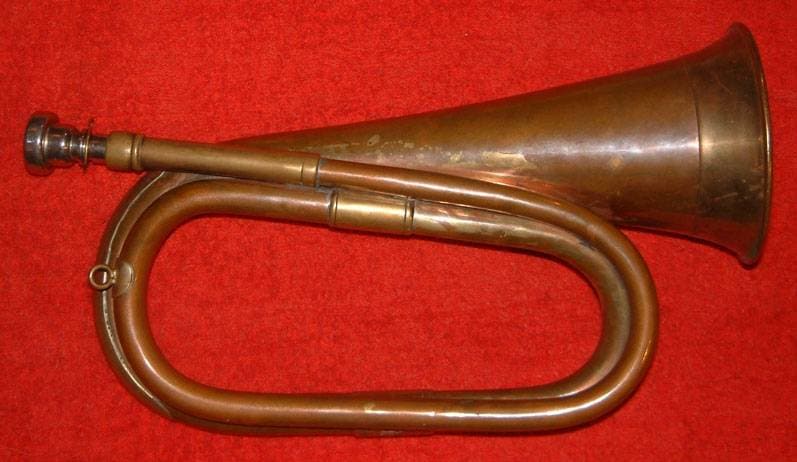
Bugle-rhside w:User:Nevilley, CC BY-SA 3.0 (Source: Wikipedia)
Modern brass instruments are capable of playing chromatically in two or more octaves by using valves or other means to extend or retract the length of the tube. The history of brass instruments is also the history of tube length adjustment mechanisms.
This category covers typical brass instruments, their ensembles, and synth brass systems. You can listen to sample sounds of each instrument by TTS-1 in the video below.
057 Trumpet
The trumpet plays the higher parts of the brass instruments. Brass instruments are capable of efficiently converting the player's breath into sound, making it easy to produce a loud sound. In particular, the trumpet excels in the sensitive frequency range of the audible range, so it sounds even louder and more penetrating. I once saw a trumpet practicing under a freeway in a noisy environment, perhaps over 100 dB, and the trumpet was the only one that rang out over the noisy cars. It seems to be able to produce a penetrating sound in any kind of noise environment. At first it was only used as a signal bugle in the military.
In fact, loud sounds almost always sound powerful. Conversely, if there is no power, there will be no loud sound, and this is a matter of fact. However, powerful sounds do not lose their power when played back at low volumes through speakers. There are many theories as to why sounds sound powerful, but loudness and abundance of overtones are not the only explanations. It seems to me that there is a more life-threatening vibration, like an explosion, at the root of the sound. Since music is not life-threatening, it is only as powerful as the sound it produces. One of the characteristics of lip reading is that there is a slight time lag before the sound stabilizes. This causes the attack to waver slightly unsteadily. When the sound is straight and undamped immediately after, it gives the impression of being pushed through, as if it were forced out with power.

057 000 Trumpet Range Bb3-Bb5
Standard Bright sounding trumpet.
057 001 Dark Trumpet Range Bb3-Bb5
This trumpet has a calmer tone.
058 Trombone
The trombone is the brass instrument responsible for the middle register. While most brass instruments use modern valves to gradually change the length of the tube, the trombone uses a classical slide to expand and contract the length of the tube to create pitches. The slide construction has a history of over 500 years. There was a time when the trombone was replaced with the valve, but it has returned to the slide. The advantages of the slide are its simple construction and the ability to smoothly connect the intervals between notes, but it is also difficult to play precise pitches and fast phrases.
When playing in, the trombone's characteristic slide can be used well to make it sound like a trombone.

058 000 Trombone Range E2-C5
Trombone with a standard brighter balance.
058 001 Trombone 2 Range E2-C5
Trombone with a rounder sound.
058 002 Brite Bone Tone range E2-C5
It has a strong metallic distorted sound with a lot of overtones. It is not distorted when the audio file is uncompressed, but it is distorted in the video. This is a tone that needs to be taken into account when considering modern compressed audio files.
059 000 Tuba Range F1-G3
The tuba is the lowest brass instrument. There are several types of tubas with the bass tuba being the most common. In terms of range, the tuba is almost identical to the double bass and functions as the bass in an ensemble. Compared to the string bass, the tuba has a richer overtone sound, which makes the bass note somewhat harder to grasp near the lowest note. The longer the tube of a wind instrument, the lower the sound, and while the trumpet is about 1.5 meters long, the tuba is more than 9 meters long.
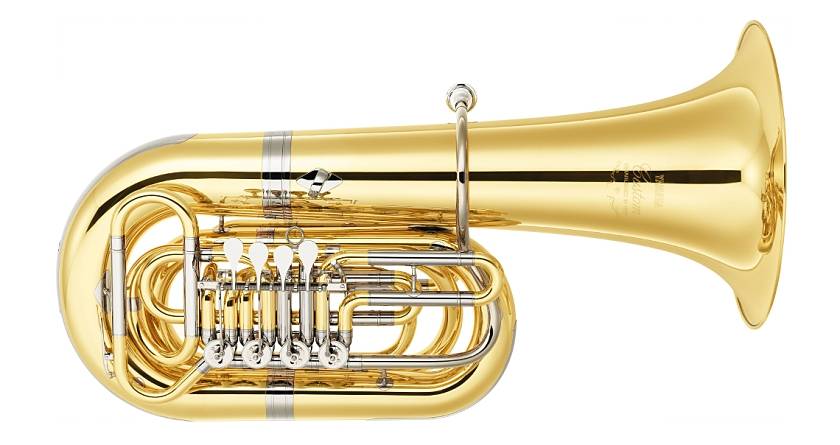
060 Muted trumpet
As shown in the photo, the sound is created by attaching a mute to the bell of the trumpet. Since brass instruments have only a bell as an outlet for sound, it is possible to muffle the sound even with this simple method. Woodwind instruments do not have this easy method of muffling sound. Mutes were originally intended for practicing, but because of the unique sound they make, they came to be actively used in performance. Today, there are many types of mutes and they have diversified along with playing with them using different techniques.
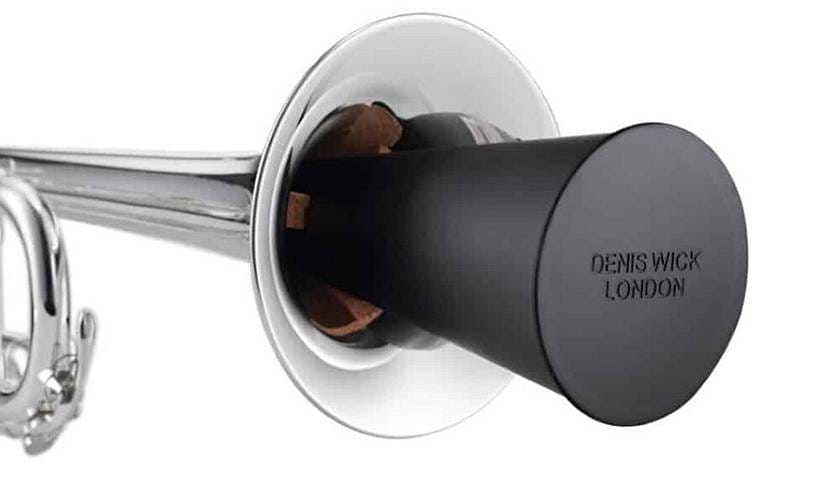
060 000 Mt Trumpet Range Bb3-Bb5
Standard muted trumpet.
060 001 Mt Trumpet2 Range Bb3-Bb5
Muted trumpet with more pronounced overtones.
061 Horn
The horn has the widest range of any brass instrument with a range of three and a half octaves. The low range approaches that of the tuba, and the high range exceeds that of the trombone and approaches that of the trumpet. The horn is one of the most complex of the brass instruments. In order to facilitate playing in a wide range of registers, the horn has evolved into a double horn, which is a combination of two instruments, and a triple horn, which is a combination of three instruments. In many cases, trumpets use mutes to produce tone, but the default for horns is to put the hand in the bell to control the tone. Although all brass instruments have the same basic structure and materials (brass), they seem to be able to coexist with each other by changing their concepts.
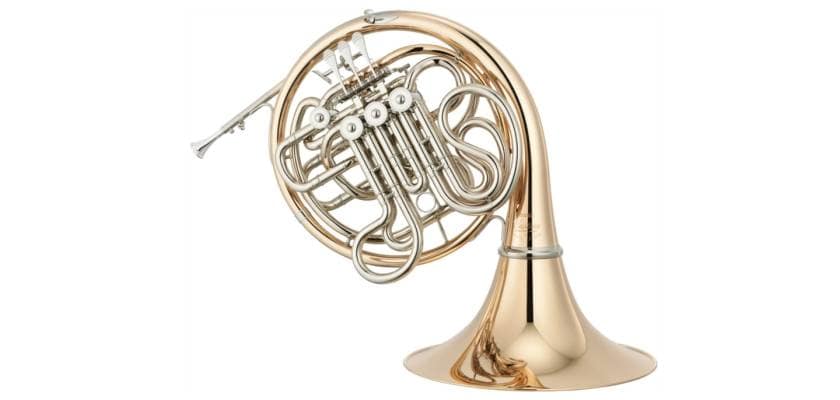
061 000 French Horns Range F2-F5
The sound has a clear and distinct contour.
061 001 Fr. Horns Range F2-F5
Sweet sounding horns with a melting sound used in orchestras.
062 Brass Section
An orchestra consists of horns, trumpets, trombones, and tubas. In a brass band, it is further composed of other instruments. The brass section has a unique attack with a strong and muddy sound.
062 000 Brass 1 Range C2-C7
Standard bright brass section sound.
062 001 Brass 2 Range C2-C7
Slightly darker sound.
063 Synth Brass
Brass sound synthesized by a synthesizer. This is a standard sound that has existed since the early analog synthesizers. In the 80's, FM sound sources and sampling sound sources were also used. Even today, the analog synthesizer-style brass sound is still alive and well, and it seems that each type of sound source has its own distinct characteristics. Synth brass can have a strong attack, and the sustain is not as muddy as the real thing, making it an easy sound to use only with synths.
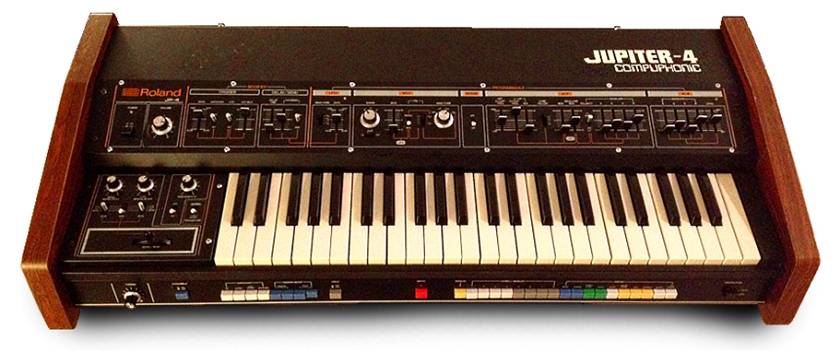
Roland Jupiter-4 Raymangold22, CC0 (from Wikipedia)
063 000 SynthBrass 1 Range C2-C7
Standard synth brass sound, artificial but with a different feel from live instruments.
063 001 SynthBrass 3 Registers C2-C7
Each register is swung left and right to create a wider range of sound.
063 002 Oct. SynthBrass Tone range C2-C7
Odd overtones are slightly lowered.
063 003 Jump Brass Range C2-C7
This sound is clearly inspired by Van Halen's 1984 song “Jump,” as the name implies, and is a full-ten version of the Oberheim OB-Xa that was sold in 1981. This analog polyphonic synthesizer was available in 2- to 8-voice models, with the 8-voice model costing nearly 2 million yen.
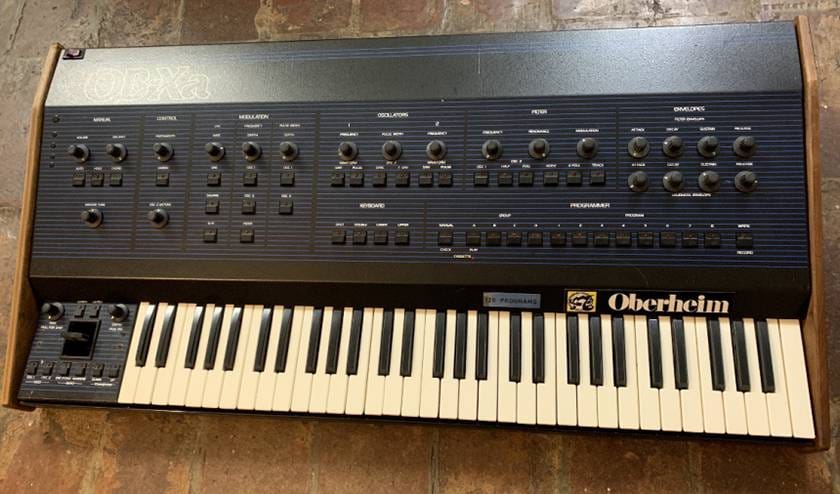
Oberheim OBX-a Alison Cassidy, CC BY-SA 4.0 (Source: Wikipedia)
064 Synth Brass 2
Overall, the synth sound is subdued, with a natural tendency. The attack is also moderate, and the long tones emphasize the fluctuation of the sound.
064 000 Synth Brass 2 Range C2-C7
This is a moderate synth brass with a soft attack and few overtones.
064 001 Synth Brass 4 Range C2-C7
This sound is characterized by a steady attack.
064 002 Velo Brass Range C2-C7
This is a mature synth brass with a rounded attack and a slightly pronounced sound.
The “sound & person” column is made up of contributions from you.
For details about contributing, click here.






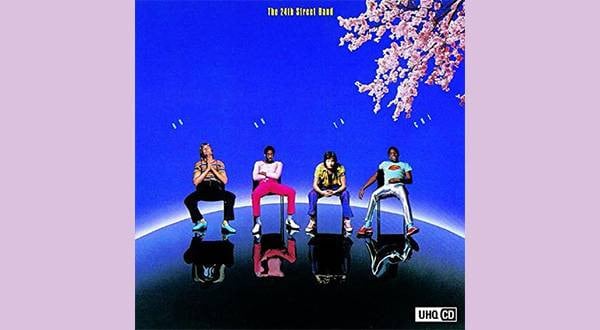





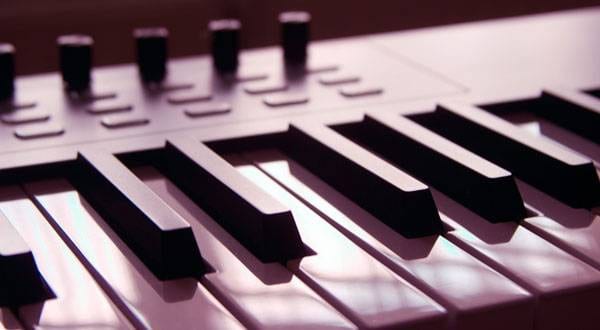
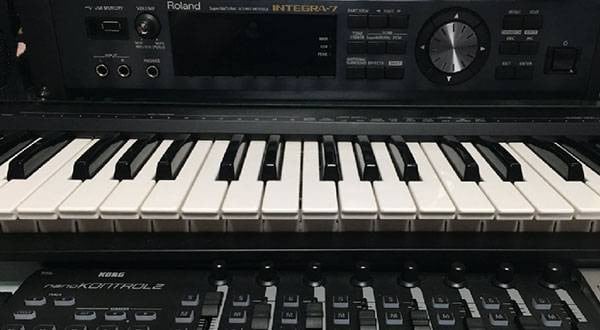
![[2023] Recommended Items for Music Programming - DAW/Software Instruments/Plug-ins](/contents/uploads/thumbs/2/2020/11/20201102_2_11495_1.jpg)
![[DJ Music Selection Techniques] 3 Recommended Music Source Websites for DJs [Comparison]](/contents/uploads/thumbs/2/2018/8/20180803_2_3857_1.jpg)
 定番DAWソフトウェア CUBASE
定番DAWソフトウェア CUBASE
 DTMセール情報まとめ
DTMセール情報まとめ
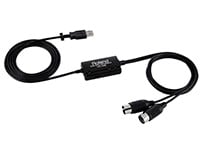 USB接続MIDIインターフェイス
USB接続MIDIインターフェイス
 USB接続対応のMIDIキーボード
USB接続対応のMIDIキーボード
 DTMに必要な機材
DTMに必要な機材
 UR-RT4 ソフト音源やループ素材をリアンプ
UR-RT4 ソフト音源やループ素材をリアンプ















